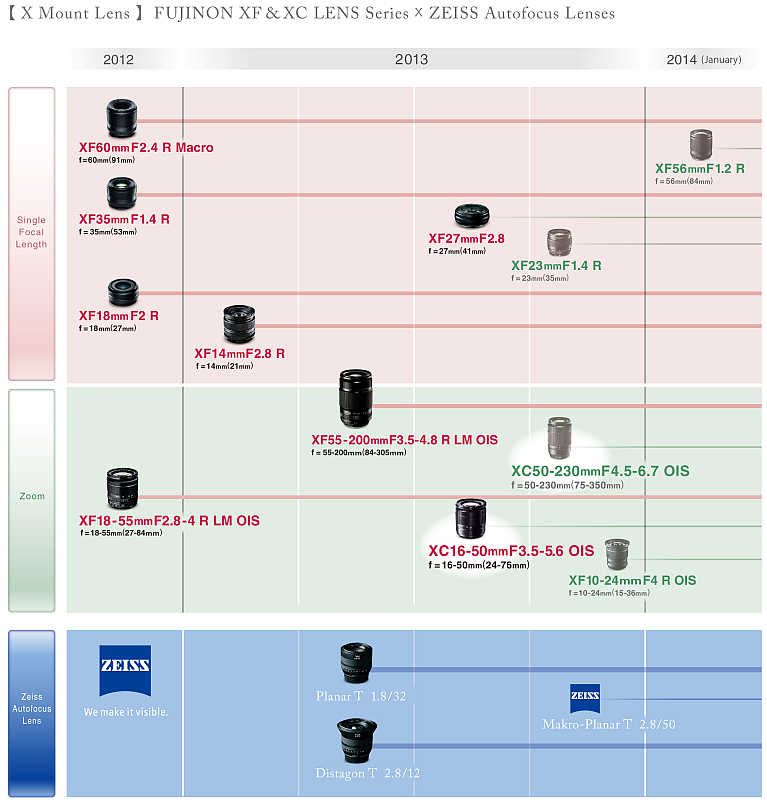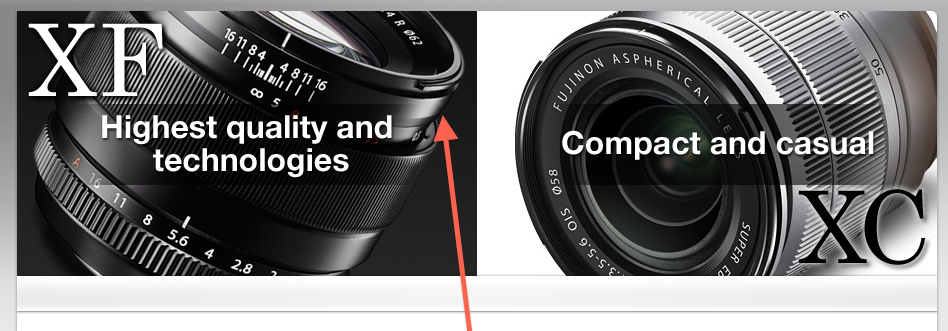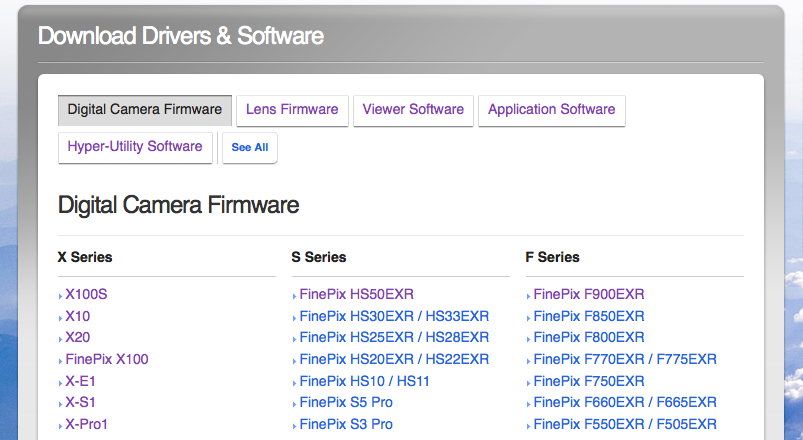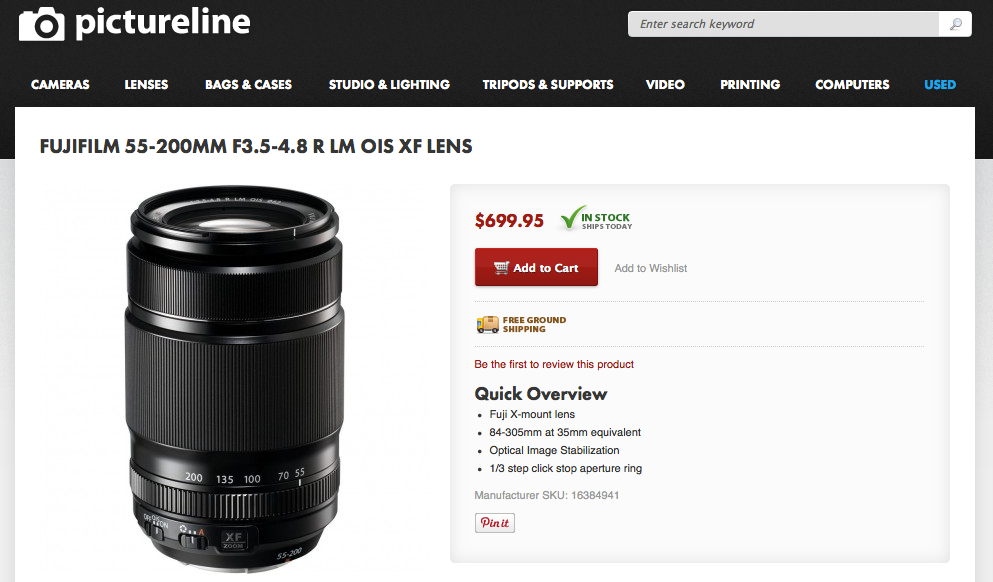
It seems that once more our sources were right, when they said that a cheaper lens, similar to the 55-200 would be released soon. Fuji updated its lens roadmap and here it is: the XC 50-230 f/4.5-6.7. They also added the XC 16-50 to the roadmap.
Fujifilm Press Release
Updated FUJIFILM X-Mount Lens Roadmap
FUJIFILM Corporation (President: Shigehiro Nakajima) is today publishing an updated version of the FUJIFILM X-mount lens roadmap. This is further to the last XF lens roadmap issued in April 2013.
A total of 10 high quality Fujinon XF lenses will be on the market by early 2014 and now an additional 2 Fujinon XC lenses have been added to this list. When you combine this with the 3 Zeiss lenses already announced, it brings the total number of X Mount lenses available to 15.
New XC Lenses
In response to market feedback and requests from users, Fujifilm is expanding its line-up of lenses to offer a new category of XC lens. These are “compact and casual” lenses and are perfectly suited to the mid-range X-M1 compact system camera. They feature all-glass elements and are lightweight and portable.
In conjunction with its X-M1 compact system camera, Fujifilm announced the launch of the first XC lens, an F3.5-5.6 standard zoom lens that covers a shooting range of 16-50mm (24-76mm in 35mm equivalent). Today Fujifilm is announcing a second XC lens, an F4.5-6.7 telephoto zoom lens that covers the shooting range of 50mm to 230mm (75-350mm in 35mm equivalent). This will be available by the end of the year.
Fujifilm will continue to strive for the development of lenses that cover a wide range of focal lengths and offer bright and high resolution reproduction even at the periphery, so that users can enjoy the high resolution features of FUJIFILM X-Series cameras.
*1 For enquiries or information about the Carl Zeiss X-mount lenses, please click on the following URL: http://lenses.zeiss.com
*2 35mm format equivalent
via photographyblog [it seems that photographyblog disabled the link… but my fast fingers copied the press release :) one day later FUJIFILM published the press-release on its global site here… and photographyblog enabled the link again]
Now spread the word on facebook and twitter.
best
Patrick







